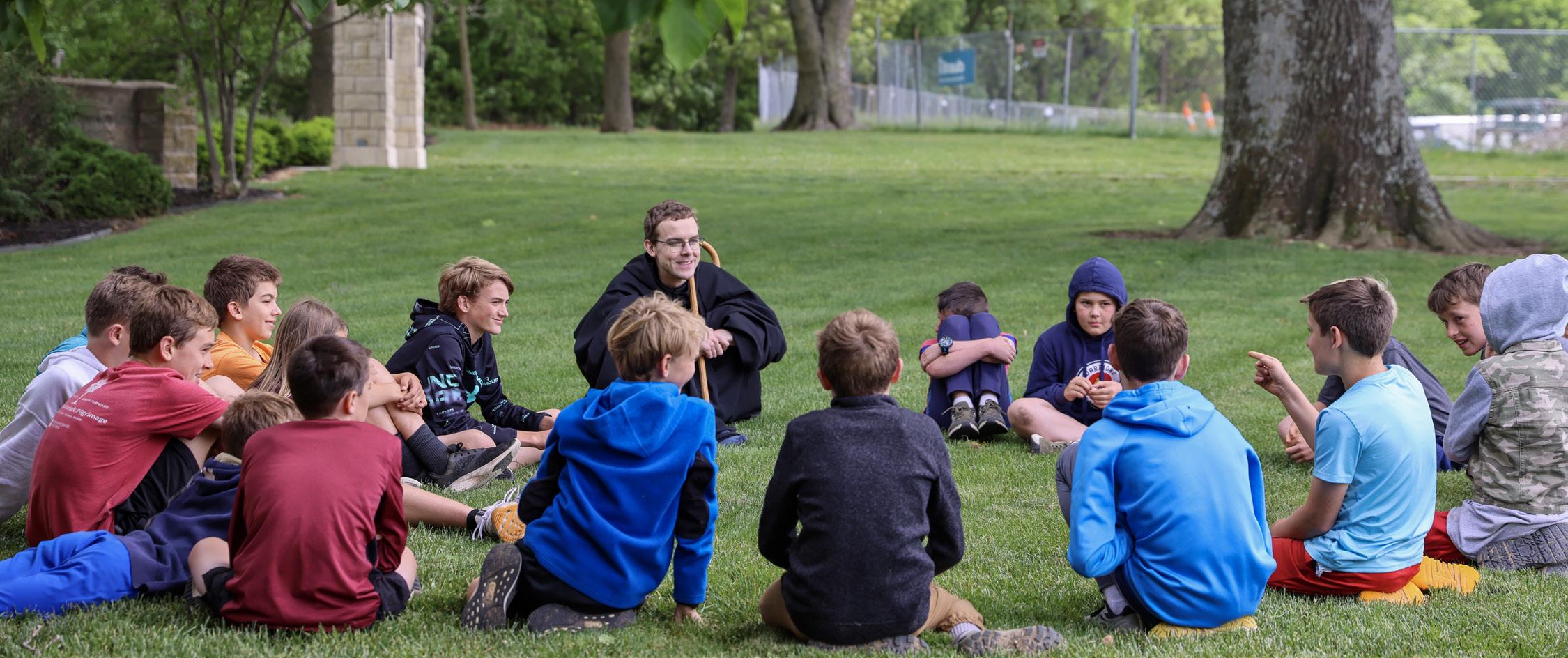

kansas monks
Dear Friends in Christ,
This July, our newsletter turns its gaze toward the enduring themes of fellowship and communion: truths that are at the very heart of the Gospel and our monastic life. Scripture reassures us again and again of God’s personal love for each of us, calling us by name and inviting us into a life of communion with Him and with one another.
On the next page, Br. Jean-Marie reflects beautifully on the spiritual significance of names—how they reveal something essential about our identity and our relationships, both human and divine. This reflection is timely as we witness how our universal Church, and our own local Church, continue to grow and respond to God’s call: Pope Leo XIV has taken up the Petrine ministry with humility and zeal, and Archbishop-elect Shawn McKnight prepares to shepherd the Archdiocese of Kansas City in Kansas. Both have, in a sense, been called anew—by name—for service in Christ’s Church.
In this same spirit of vocation and listening for God’s call, Br. Maximilian Mary Anderson shares an update on his first year serving as our Abbey’s vocations director. His work is a daily reminder that each vocation begins with a moment of being called—and a generous response in faith. Please keep Br. Maximilian and those discerning a monastic vocation in your prayers.
This summer, we at St. Benedict’s Abbey were also privileged to host a joyful occasion of spiritual communion within
our Archdiocese. The annual diocesan priests’ retreat at Benedictine College coincided with our own monastic retreat, and Archbishop McKnight invited all clergy and religious—priests, monks, sisters—to join in the celebration of Mass and fellowship here in Atchison. It was a visible reminder of the unity we share in Christ, and we’ve included some photographs and notes from that grace-filled day.
As you read through this issue, may you be reminded of the many ways God draws us together and calls us by name into His service. Let us respond to His voice with open hearts and renewed love for one another.
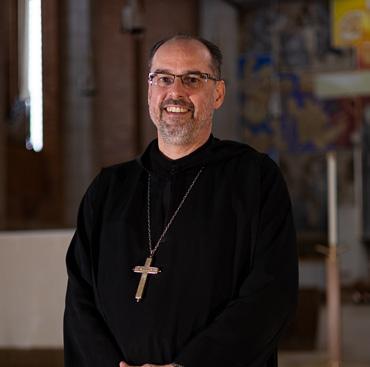
In Christ,

Abbot James R. Albers, O.S.B
IN THIS ISSUE
Feature | Pray and Work for Vocations � � � � 4-5
Br. Maximilian’s First Year as Vocation Director
Up Next | Unum Nomen
What’s in a Name?
Unum Nomen
What’s in a Name?
You have probably heard this phrase before. You may also have heard the rest of the line: “That which we call a rose / By any other name would smell as sweet.” These sayings have become so much a part of common English parlance that their origin is often forgotten.
In its original context, the question, “What’s in a name,” appears in Act II, scene 2 of Shakespeare’s Romeo and Juliet. Lamenting the long-standing feud between their families, Juliet goes on to say, “So Romeo would, were he not Romeo called, / Retain that
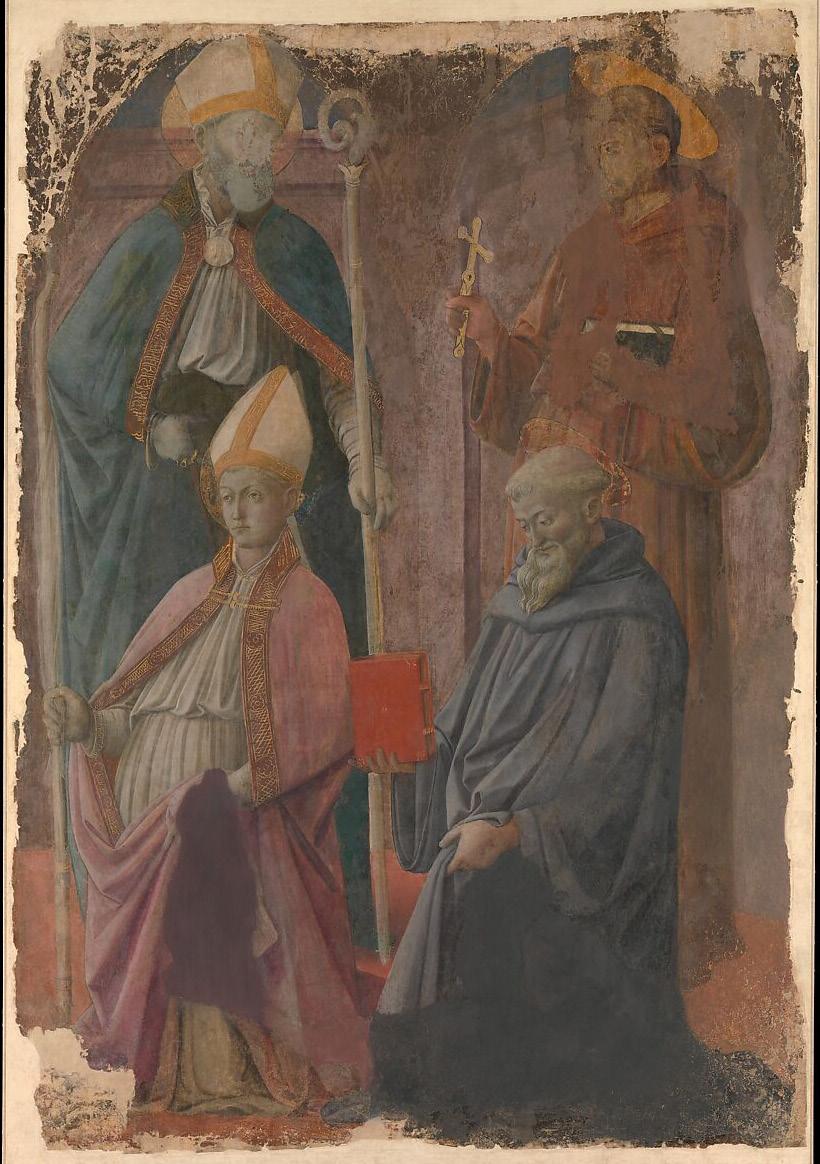
By Br. Jean-Marie Hogan, O.S.B.
dear perfection which he owes / Without that title.” In other words, why should his name matter? Even if he were named something else, Romeo would still be the same man.
Nevertheless, Juliet knows that names do matter. He is a Montague. She is a Capulet. And Montagues and Capulets do not mix—not without quarrels and bloodshed. Unless he can find a way to “doff [his] name,” or she hers, their love seems destined to failure.
From Juliet’s perspective, his name is a sign of division. But names can also be signs of communion. Let me point to two such names: Pope Leo XIV and Archbishop Shawn McKnight.
On May 8th, Robert Francis Cardinal Prevost was elected the 266th successor of St. Peter. According to ecclesial custom, he received a new name upon his election. While a papal election is not a sacrament, it is worth noting that the other moments in which the faithful receive new names—Baptism and Confirmation—involve the conferral of a new identity in Christ and a particular mission in the Church. The new pope’s name signifies both a generic communion with the previous supreme pontiffs, all the way back to St. Peter, and a specific communion with those who bore that name before him (e.g., Pope Leo XIII and Pope St. Leo the Great).
The Holy Father’s motto, In Illo Uno Unum, expresses the unity of Christians in Christ.
The Holy Father’s motto, In Illo Uno Unum, expresses the unity of Christians in Christ.
This motto comes from his order’s founder, St. Augustine. Commenting on Psalm 128 [127], the Doctor of Grace writes that Christians, though many, are “one
Fra Filippo Lippi. Saints Augustine and Francis, A Bishop Saint, and Saint Benedict.
in the one Christ.” Ever attentive to the Divine Word, St. Augustine points out that this psalm begins in the plural—“blessed are all those who fear the Lord, who walk in His ways”—but then switches to the singular—“for you (sg.) shall eat the labors of your hands; blessed shall you (sg.) be, and it shall be well for you.” By abiding in Christ, we become members of His Body. This unity does not destroy the uniqueness of each of the members; rather, as St. Paul says in I Corinthians 12, spiritual gifts are distributed throughout the Body of Christ by the one Holy Spirit.
By abiding in Christ, we become members of His Body. This unity does not destroy the uniqueness of each of the members; rather, as St. Paul says in I Corinthians 12, spiritual gifts are distributed throughout the Body of Christ by the one Holy Spirit.
On May 27th, at the Mass for Archbishop McKnight’s installation, Cardinal Pierre (Apostolic Nuncio to the United States) read the Apostolic Mandate naming him as the new bishop. He then handed the document to Archbishop McKnight, who showed it to the clergy and faithful in attendance. This gesture concretely signified the new archbishop’s communion with the vicar of Christ.
The spiritual significance both of the papal election and of the archepiscopal installation could scarcely be better expressed than in the words of Preface VIII for Sundays in Ordinary Time: “For, when your children were scattered afar by sin, through the Blood of your Son and the power of the Spirit, you gathered them again to yourself, that a people, formed as one by the unity of the Trinity, made the body of Christ and the temple of the Holy Spirit, might, to the praise of your manifold wisdom, be manifest as the Church.” We pray for “Leo our Pope and Shawn our Bishop” that they may be effective signs of communion for all the faithful.
TABLE OF CONTENTS
Br. Maximilian Mary Anderson recounts the lessons of his first year on the job as the Abbey’s vocations director.
Reflect on the readings for this month’s Sunday and Holy Day Masses.
On June 5, the Monks of St. Benedict’s Abbey were delighted to host Mass and luncheon with Archbishop Shawn McKnight and the religious of the Archdiocese of Kansas City in Kansas.
The mission of St. Benedict’s Abbey is to glorify God by seeking him through joyful self-sacrifice, by embracing fully the monastic and apostolic ideals, and by leading others to encounter Jesus Christ, who brings us all together to eternal life.
The Kansas Monks newsletter is a monthly publication of the monastic community of St. Benedict’s Abbey to help fulfill this mission.
Read our archives at www�kansasmonks �org/newsletter
My little children, your hearts are small, but prayer stretches them and makes them capable of loving God.
saint john vianney
genuinely possible through this assignment given me by Abbot James.
This is where my request for your help in praying and working for vocations comes in! First of all, I ask that you pray for me. It is very true that this task is bigger than me and that I am not smart, strong, or resourceful enough to do it alone. Second, please pray for vocations to the Abbey. The monks pray for more vocations, the men already discerning our community, and our personal and communal growth in conversion to Christ every day. I urge you to join us in praying for these too!
Lastly, if you know a young man who would make a good monk and could have a vocation, please refer us to him! I have been surprised by the number of conversations I’ve had this year with inquirers who’ve been encouraged by someone they trust to check us
out. That’s always encouraging for me to hear! I know that I have a beautiful vocation because I can remember all of how Jesus drew me to it and how he continues to draw me deeper; it’s really encouraging to see that others see something similar and judge it worthy of proposing to men seeking to take their discernment seriously! Thanks for a great first year; let us pray for each other as I embark on my second!
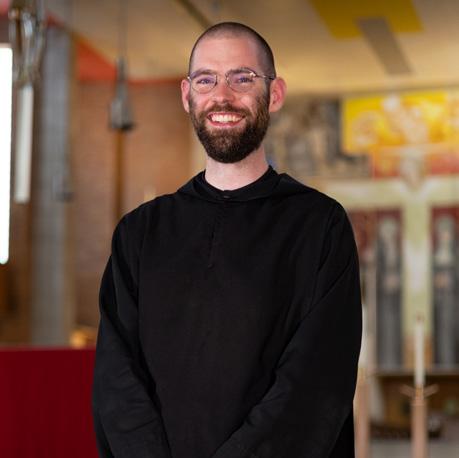
Br. Maximilian, O.S.B. is a former FOCUS missionary (and current monk). He recently became vocations director for the Abbey.
called by name
“I have called you by name; you are mine” Isaiah 43:1
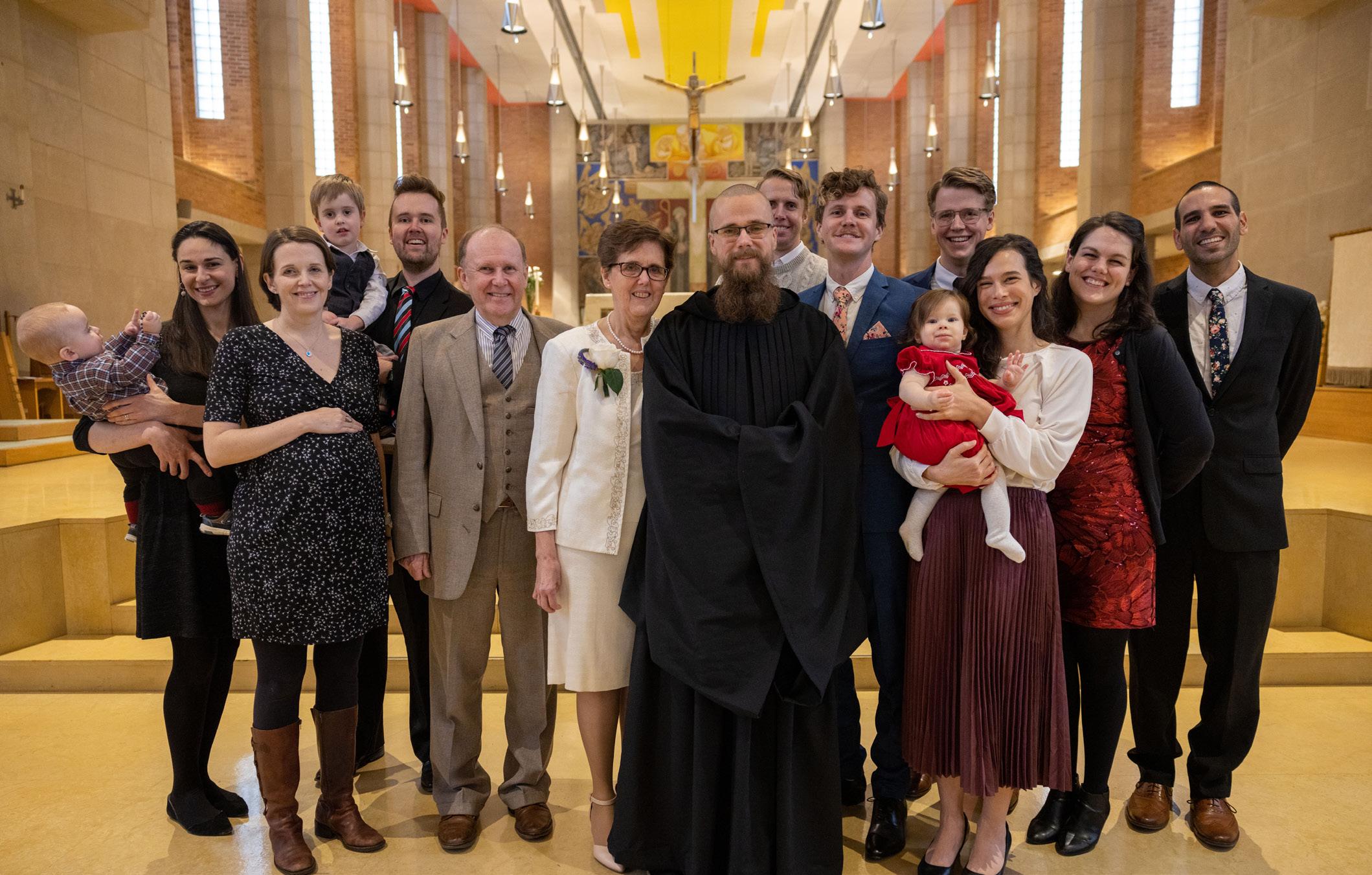
Do you know a man who would make a good monk and could have a vocation? Refer us to him� Visit www�monkvocations �org/called-by-name
Living the Liturgy
Commentary on the Liturgical Year
Reflect on the readings for this month’s Sunday and Holy Day Masses.
A Season of Saints
By Tom Hoopes
July is a month of saints that starts a season of saints. On the U.S. bishops’ “Liturgical Calendar for the Dioceses of the United States,” once Ordinary Time is in full swing, the saints come streaming in. The calendar features nine saints in both July and August after featuring very few in the previous months.
First comes St. Thomas the Apostle on July 3 — the doubter who is nonetheless honored for being the apostle to India. St. Benedict, who transformed the culture of Europe, comes on July 11. On July 14, the Church honors Native American St. Kateri Tekakwitha precisely the time that Camp Kateri in Kansas is in full swing — along with other Camp Kateris in Nebraska, Florida, and elsewhere. The next day, the Church honors St. Bonaventure, the Scholastic Doctor of Franciscan Spirituality.
The third week of July honors saints from the dawn of Christianity: St. Mary Magdalene, the apostle to the apostles on July 22; St. James the Greater, brother to John, on July 25; and Saints Joachim and Anne, grandparents of Jesus on July 26. The month ends by honoring St. Ignatius of Loyola on July 31.
The variety of July saints shows the diversity of vocations, personalities and charisms in the Church. But the month includes two key celebrations that are my favorites because they spotlight families of saints.
One, newly added to the calendar, is July 29’s Memorial of Saints Martha, Mary and Lazarus. A 2021 Vatican decree specified that the day no longer belongs to St. Martha alone, but to the three siblings who dined with Jesus, and entered Scripture even more significantly when Jesus raised Lazarus from the dead.
But my personal favorite is a feast that the U.S. bishops don’t feature: the July 10 celebration of St. Felicitas, a Catholic supermom. She was a widow who was captured with her seven sons in the second century in the persecution under emperor Marcus Aurelius. The judge said, “If you wish to die, die! But do not destroy your sons.”
St. Felicitas answered, “My sons will live forever if, like me, they scorn the idols and die for their God.” It is said she was martyred eight times because she had to watch her sons killed first. Then she joined them in heaven.
This summer, keep close to her and all who configured their lives to Jesus Christ, in every state in life.
Comfort (and Challenge) Your Neighbors
July 6 | Fourteenth Sunday in Ordinary Time
The Gospel says that Jesus sent 72 disciples on mission — but that’s just a numerical way of saying, “Jesus sends every Christian to evangelize.”
That’s why these 72 are anonymous in the Gospel: They are us, and we are not sent to make a name for ourselves, but to make a name for Jesus,
like Paul in the Second Reading, who says , “May I never boast except in the cross of our Lord Jesus Christ, through which the world has been crucified to me, and I to the world.”
In the Gospel, Jesus gives them two messages to deliver: “Peace to this household” and “The kingdom
of God is at hand for you.” The first message is encouraging; the second is challenging. He wants us to deliver both.
People urgently need encouragement; they need to know that God is real, he brings peace of mind, calms anxieties, and restores confidence. His Church welcomes his children like a mother, like Jerusalem is described in the First Reading.
But the challenge is urgently needed, also. People need to know that God himself is right now the king of all creation, and we should behave accordingly, because he sees us, cares about us, and will judge us — and has promised that “It will be more tolerable for Sodom,” which was utterly destroyed, than it will be for those who reject him.
St. Benedict, A Man for Our Times June 11 | Memorial of St. Benedict, Abbot
The last four popes all pointed to one special man for our times: St. Benedict.
St. John Paul II said “Subiaco became the cradle of the Benedictine Order. From it a bright beacon of faith and civilization shone out which, through the example and work of the holy Patriarch’s spiritual sons, flooded the West and East of Europe and the other continents.”
Pope Benedict XVI took his name because he saw in his namesake’s clear-eyed wisdom the answer to our ideologically grotesque world. “For its moderation, humanity and sober discernment between the essential and the secondary in spiritual life, his Rule has retained its illuminating power even to today,” he said.
Pope Francis said that the rule of St. Benedict sums up the kind of life that can transform the world. Benedict showed the world that “it is from contemplation, from a strong friendship with the Lord that the capacity is born in us” to evangelize, he said.
Last, Pope Leo XIV, who announced at his inauguration that “now is the hour of love,” said later that week: “How can we fail to mention, then, as we speak of love as the source and driving force of the preaching of the Gospel, the insistent appeals of St. Benedict, in his Rule, to fraternal charity in the monastery and hospitality towards all?”
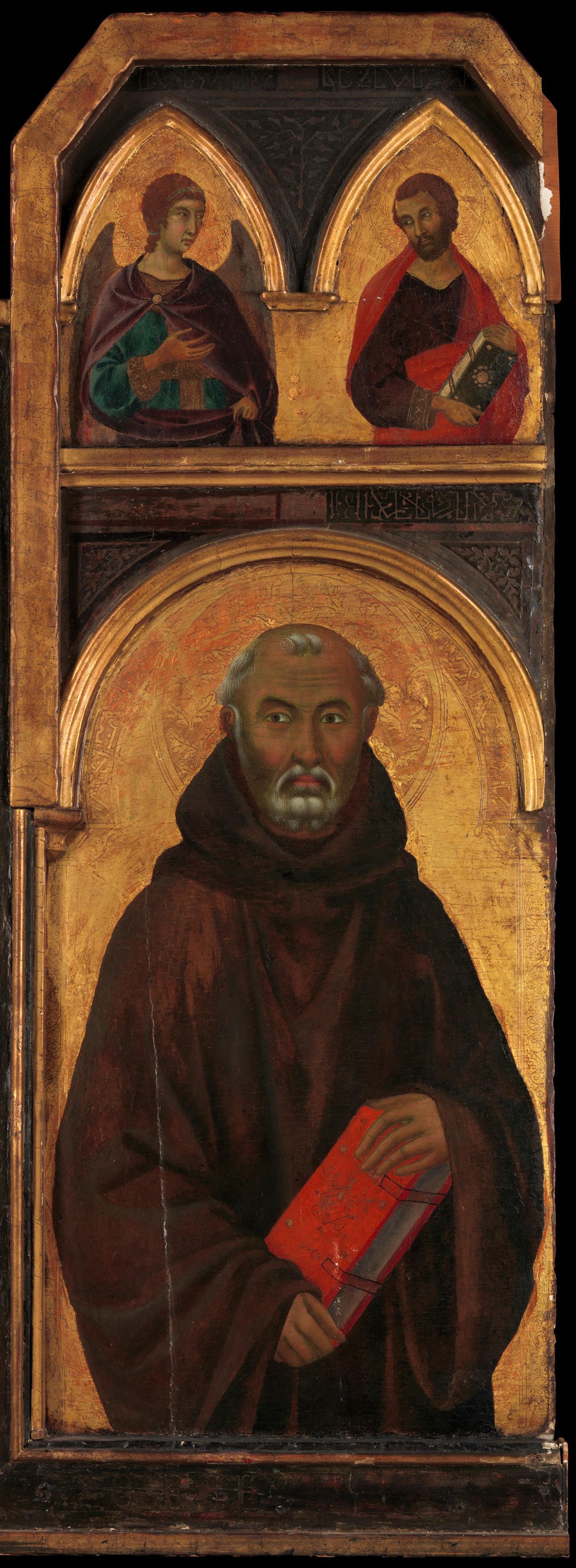
Segna di Buonaventura. Saint Benedict. 1320s.
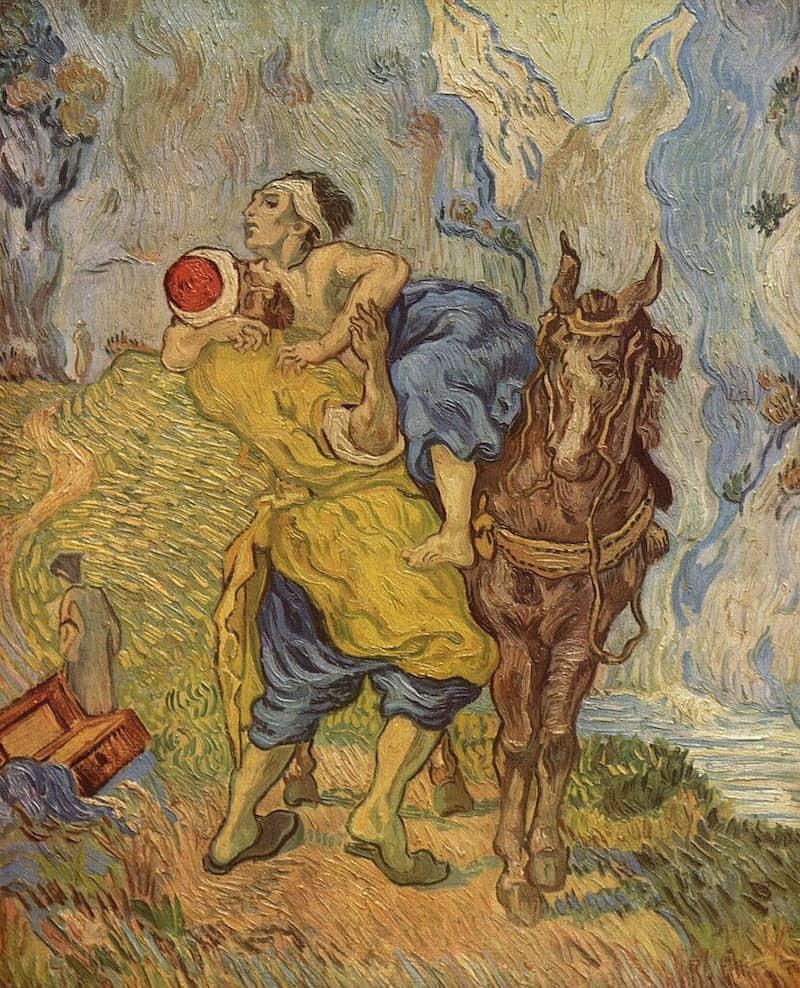
You Know What to Do
July 13 | Fifteenth Sunday in Ordinary Time
This Sunday, Jesus tells the story of the Good Samaritan. In the story, the great model of the godly life is not the priest, a performer of elaborate rituals in the Temple, or the Levite, with his special status and education. It is the foreign traveler who is willing to give basic care to a stranger.
The message: Being Christian doesn’t mean knowing the right things or associating with the right people. It means doing the right things, with love.
The message: Being Christian doesn’t mean knowing the right things or associating with the right people. It means doing the right things, with love.
Moses’s words in the First Reading apply to us: “This command that I enjoin on you today is not too mysterious and remote for you. It is not up in the sky
… nor is it across the sea. … No, it is something very near to you, already in your mouths and in your hearts; you have only to carry it out.”
The duties we have to each other are not hard to figure out — they are just hard to do.
But the great beauty of Christianity is that by doing simple things we enter the glory and majesty of God. One moment, you are imitating Jesus of Nazareth, and the next you find yourself at the side of the one Paul describes in the Second Reading: “Christ Jesus is the image of the invisible God. … In him were created all things in heaven and on earth. … He is before all things, and in him all things hold together.”
Take Martha and Mary Literally July 20 | Sixteenth Sunday in Ordinary Time
In It’s Martha and Mary Sunday, but before you think about what that famous Gospel passage says about contemplative vs active vocations, start by taking it literally, as a story describing how to act when you dine with Jesus. In other words, how to behave at Mass.
Are we like Martha, “anxious and worried about many things” at Mass reviewing our week and our to-do list? Are we noticing, and judging, the behavior of those around us? Or are we like Mary at Mass — quietly focused on Jesus?
Of course it’s easier to be Mary if you are single or an empty-nester and hard when you are the “Martha” in charge of a family. That’s what the First Reading is for — another simple story about dining with “the Lord,” as the three angels are identified in the reading.
Abraham has to be a Mary while fulfilling the responsibilities of Martha. He welcomes his guests, then starts running. He “hastens” to his tent to start the rolls with Sarah, “runs “to his herd to pick out a steer, personally fetches curds and milk, and then waits on his guests. He is Martha with Mary’s focus — like us at Mass.
Vincent van Gogh. The Good Samaritan. 1890.
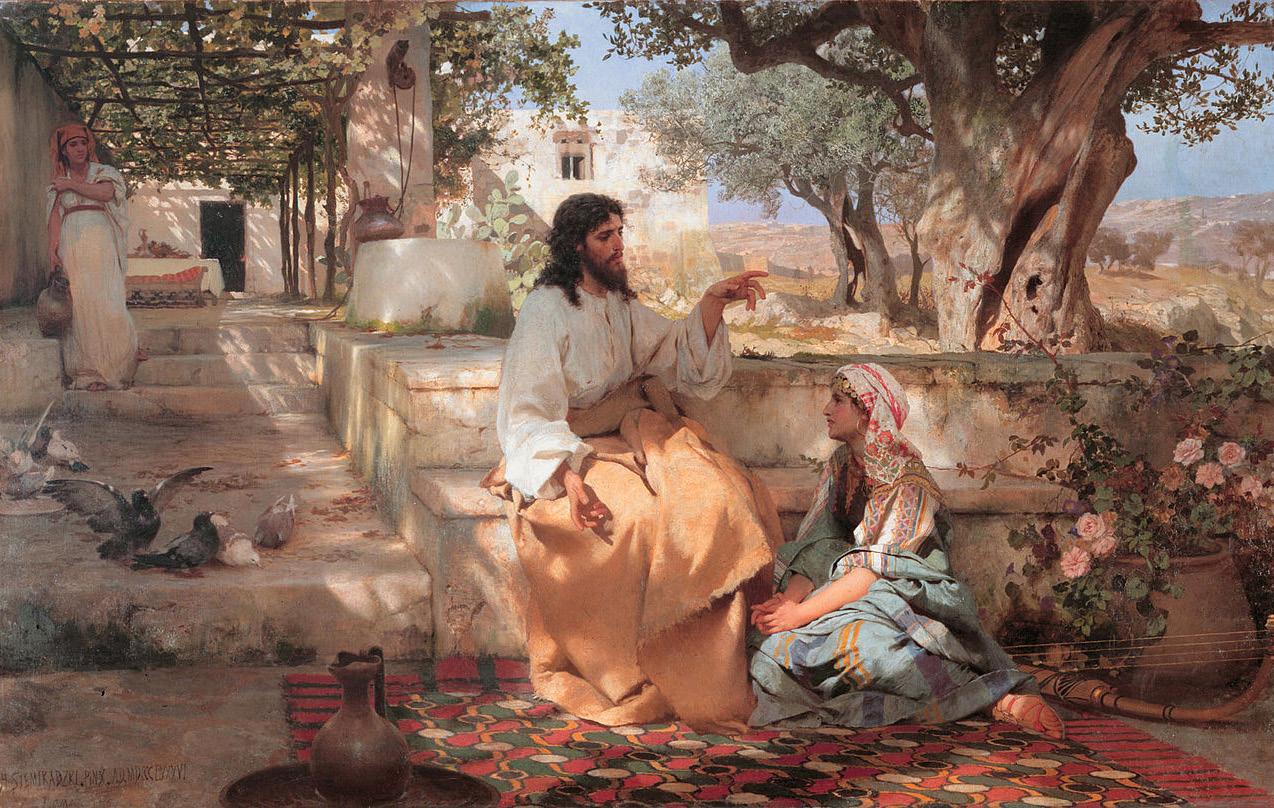
God is a Father, not a Cop July 27 | Seventeenth Sunday in Ordinary Time
Abraham in Sunday’s first reading makes a mistake we often make: We forget who God is for us. Jesus in the Gospel corrects us.
When the disciples request, “Lord, teach us to pray,” Jesus responds by teaching them the words of the Our Father. The words treat God as a powerful, but also tender and intimate.
We don’t naturally think of him that way. Like Abraham in the First Reading, we can think of God as a powerful, indifferent authority figure. After all, he is the great rule-maker, and breaking his rules breaks us. We feel like we have to watch our step or get slapped back into line.
Abraham expects that God will punish innocent people out of his angry insistence on order, and he tells him he shouldn’t. God agrees. But Abraham does not take Yes for an answer. He simply cannot believe
that God will be loving and kind enough to spare the innocent. So he asks him again. And again.
Jesus also compares us to a questioning child who misunderstands what is good for us, and asks, “If you then who are wicked, know how to give good gifts to your children, how much more will the Father in heaven give the Holy Spirit to those who ask him?”
Henryk Siemiradzki. Christ in the House of Martha and Mary. 1886.
A Blessed Gathering
Archbishop McKnight ‘s Mass and Luncheon with Religious
On June 5th, the Monks of St. Benedict’s Abbey were delighted to host a Mass and luncheon with Archbishop Shawn McKnight and the religious of the Archdiocese of Kansas City in Kansas. This was a wonderful gathering of around 140 men and women religious from 23 orders that serve in our Archdiocese. Enjoy a few moments from the event! Photos are courtesy of Jay Soldner with the Archdiocese of Kansas City in Kansas.
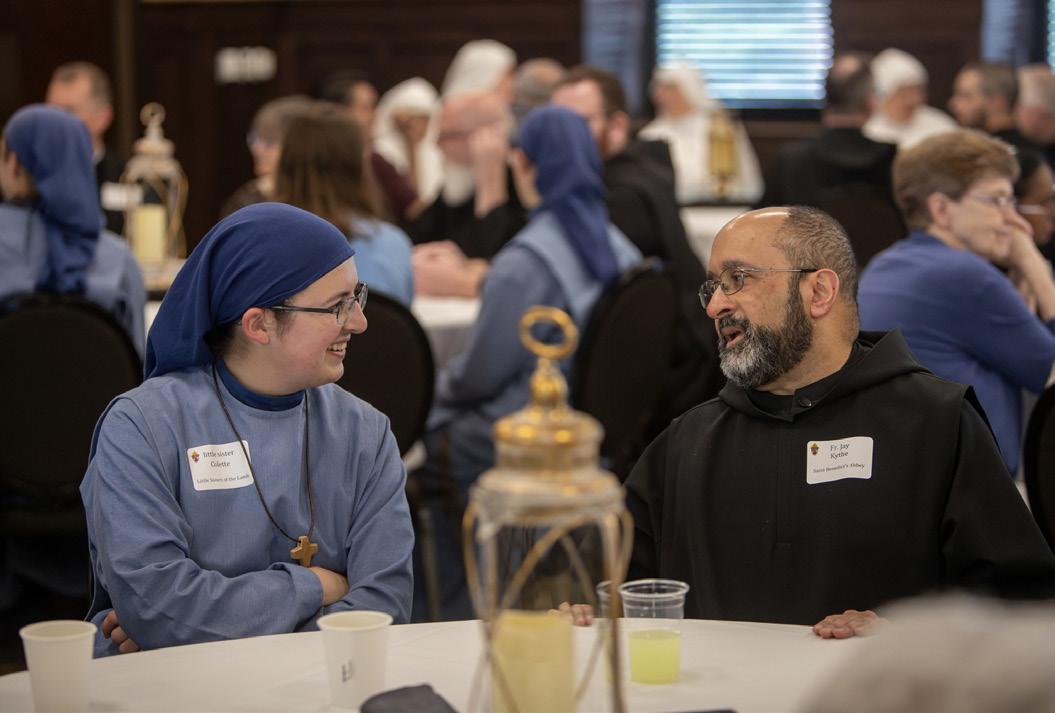
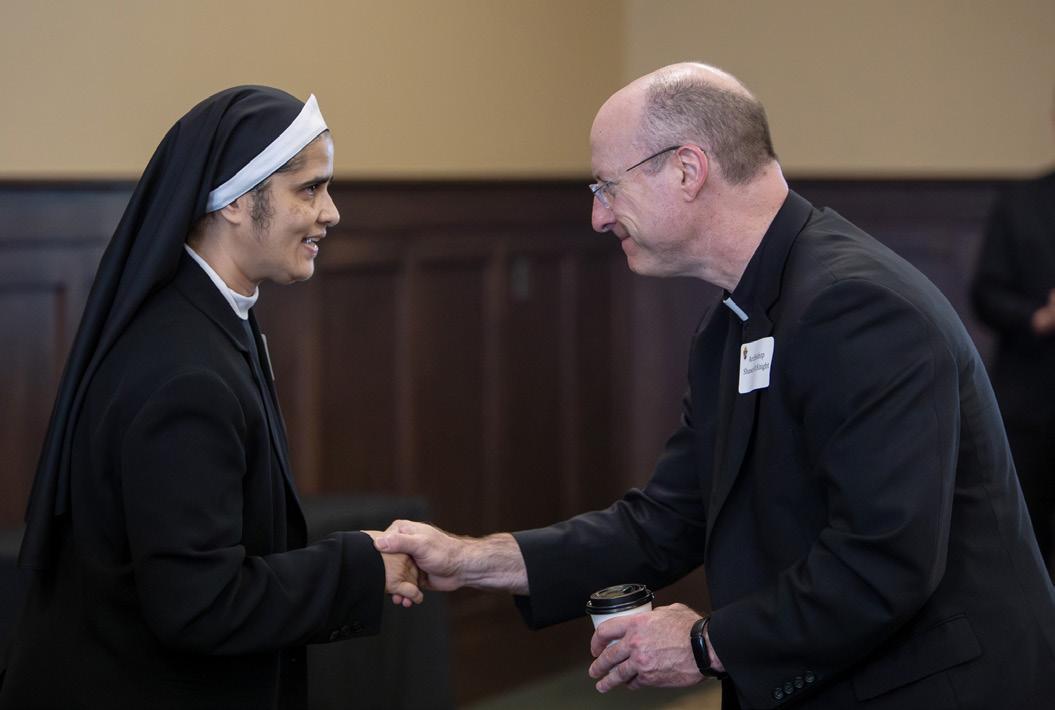
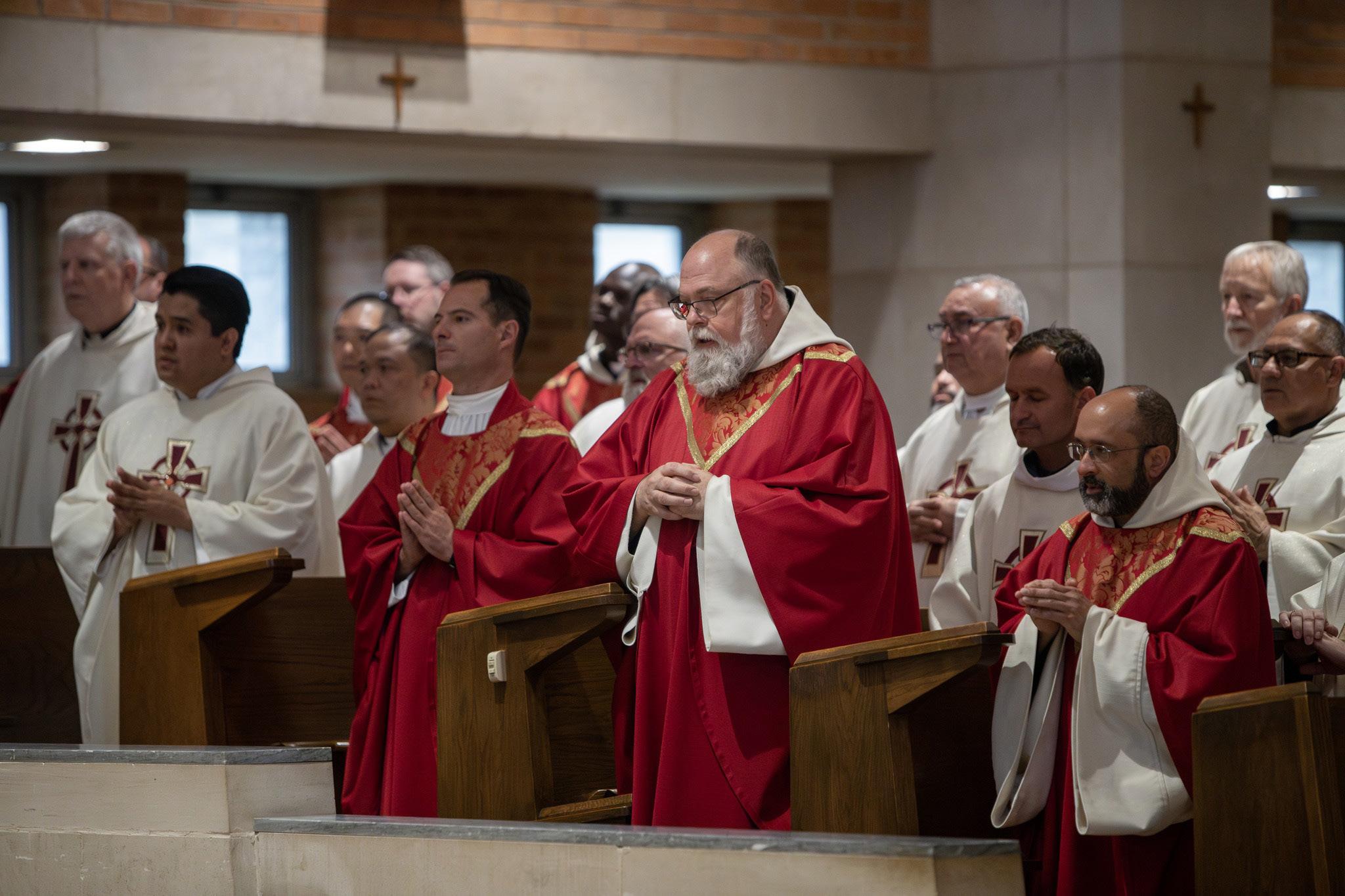
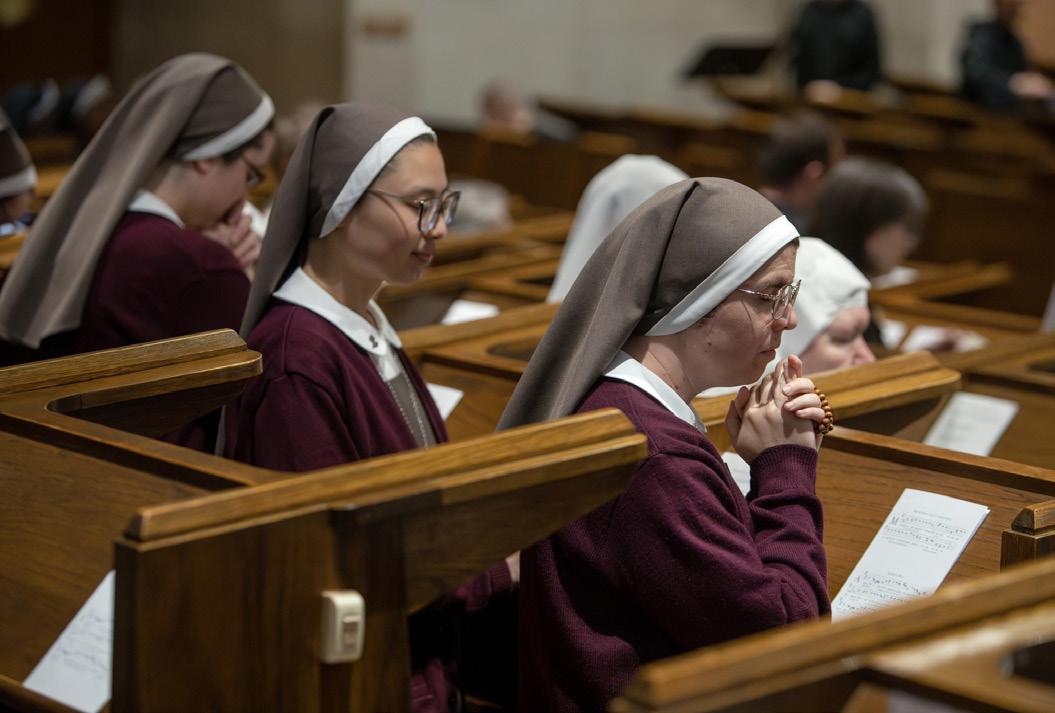
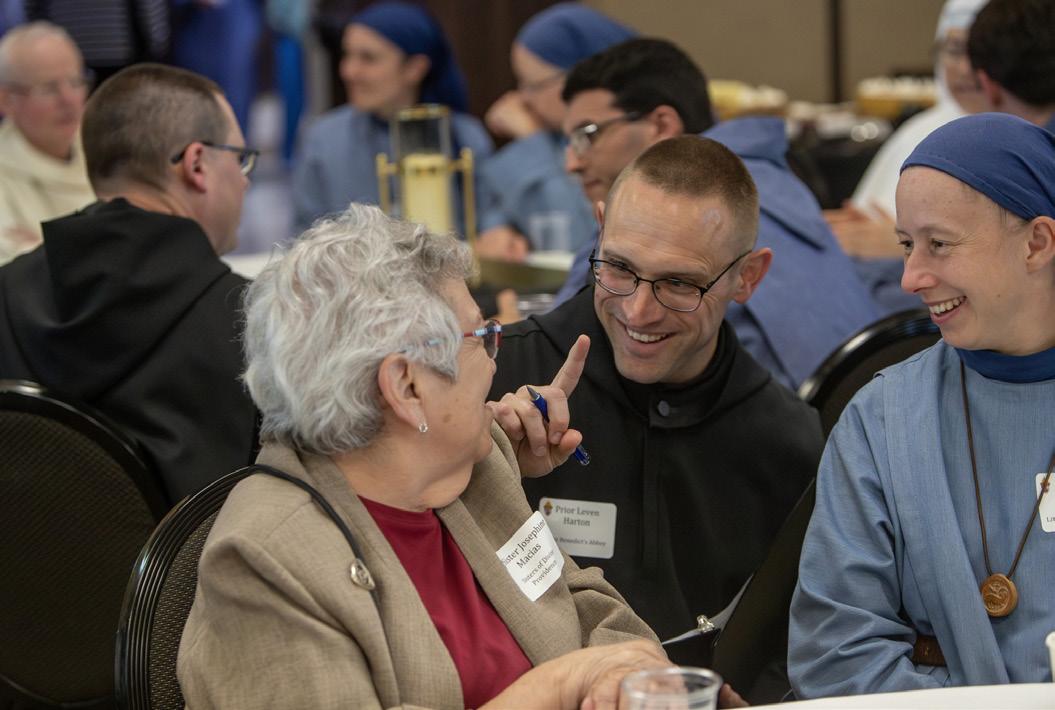
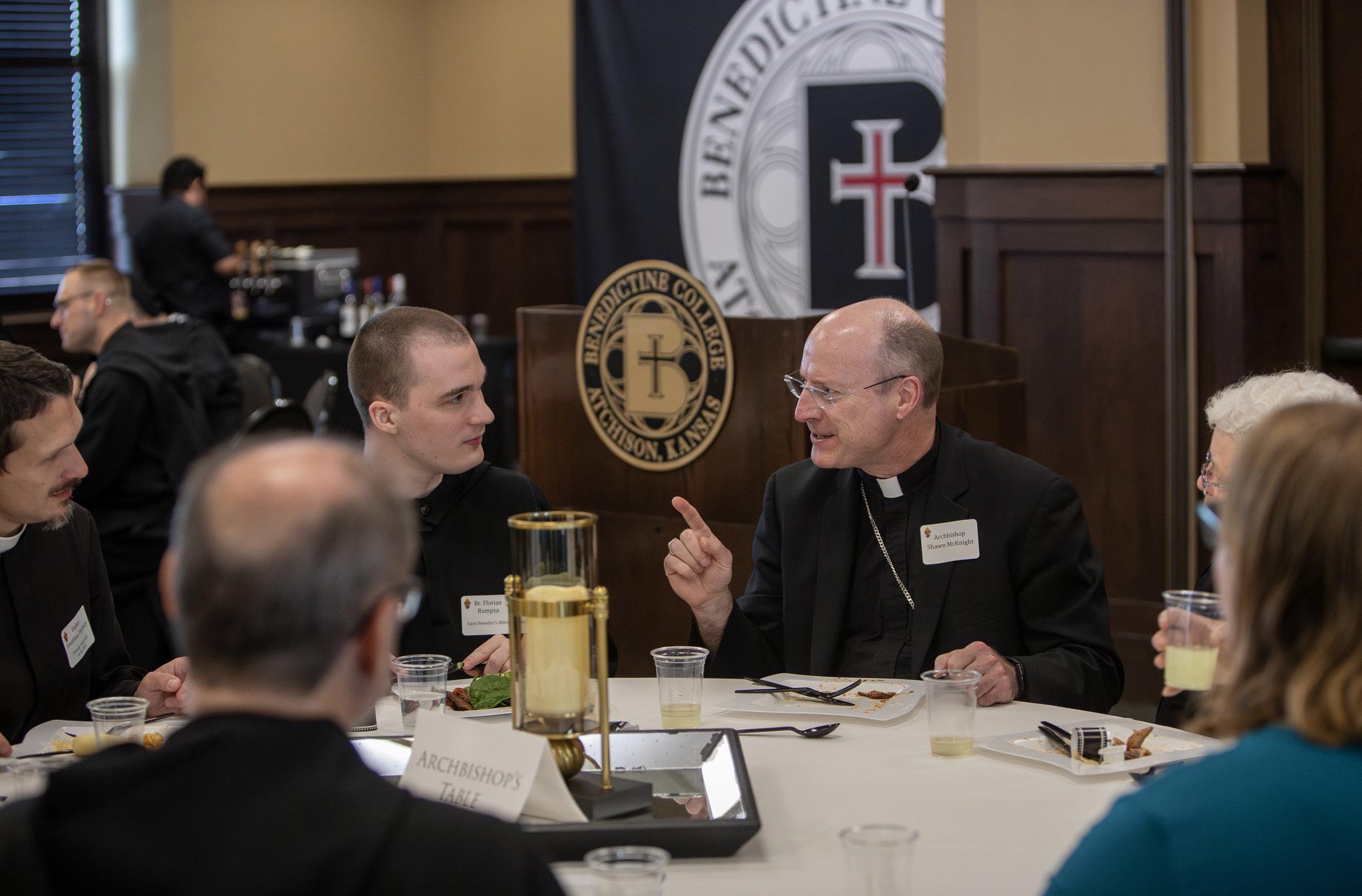
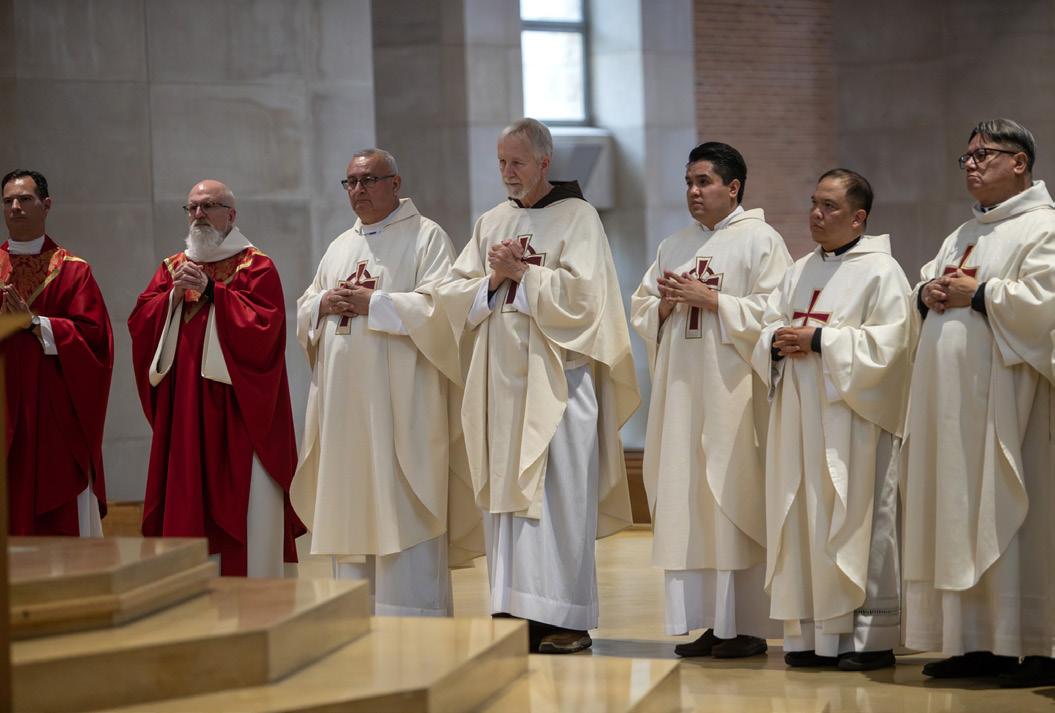
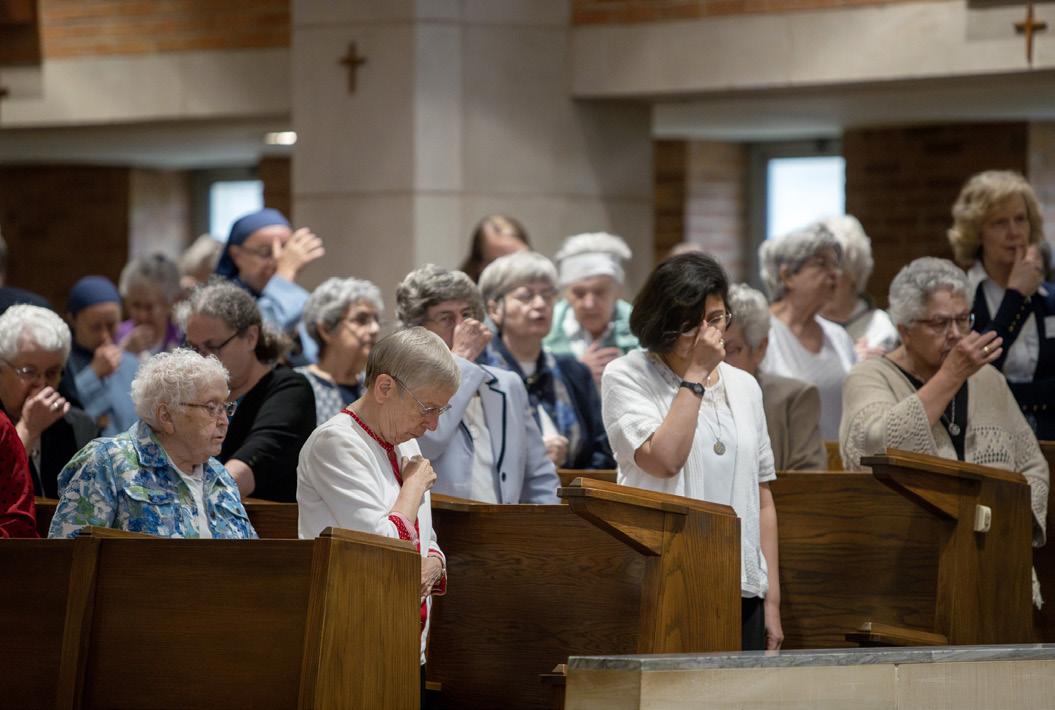
In celebration of this Jubilee A.D. MMXXV: Pilgrims of Hope join the Monks of St. Benedict’s Abbey on a pilgrimage in the heartland.
Pilgrimage of Hope
Thursday-Sunday, October 16-19, 2025
RESERVE YOUR SPOT
before July 31st and receive $50 off at registration
To learn more about the itinerary and reserve your spot visit www�kansasmonks �org/events/pilgrimage-of-hope
KANSAS MONKS
editorial team
Editor-in-Chief - Abbot James Albers, O.S.B.
Managing Editor - Seth Galemore
Art Director - Olivia Wieger
Publication Advisors:
Fr. Matthew Habiger, O.S.B.
Br. Timothy McMillan, O.S.B.
Josh Harden
Dwight Stephenson follow @kansasmonks on
donate to support st. benedict’s abbey www.kansasmonks.org/donate
submit your prayer requests www.kansasmonks.org/prayer-requests
called by name
Do you know a man who would make a good monk and could have a vocation? Refer us to him. Visit www.monkvocations.org/called-by-name
